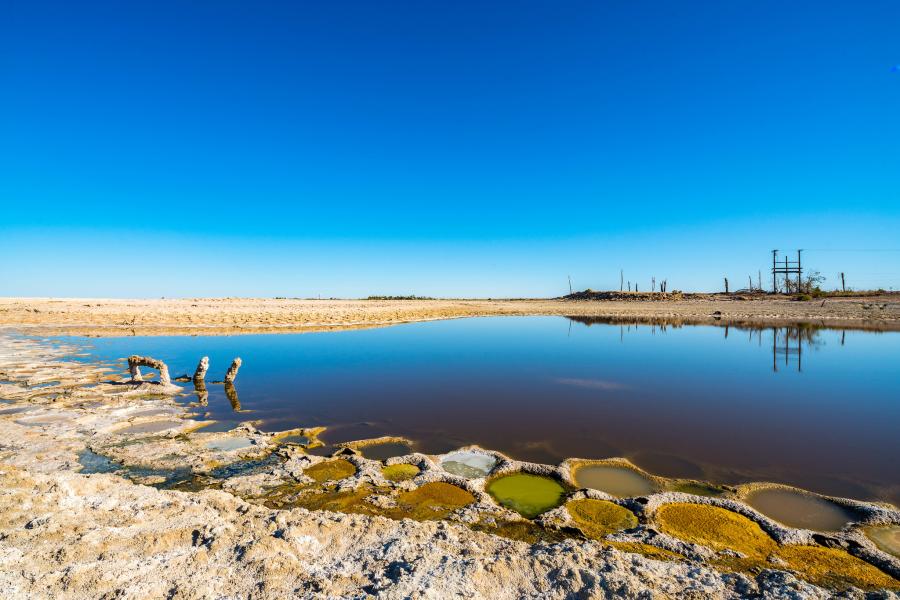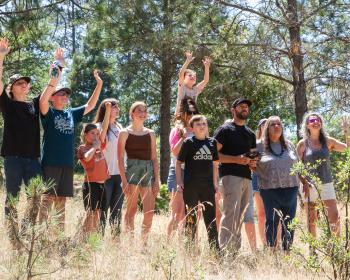The Haines Borough is a municipality organized under Alaska State Code. The Chilkoot Indian Association is a tribal government organized under the Indian Reorganization Act of 1941. While the tribe functions apart from the Haines Borough, tribal members live integrated with borough residents. The 400 tribal members live just as everyone else, scattered throughout the municipality, which has a total population of 2,300. The tribal government delivers services directly to its members, but it also benefits the broader community through its one-to-one relationships with local, regional, national, and international organizations and governments.
The tribe and the municipality are currently preparing a Memorandum of Understanding to govern their relationship. Even without a formal document, the tribe and Haines Borough have collaborated on numerous and varied community projects. Communication and information-sharing is easier because tribal members are also Haines Borough citizens. For example, some tribal members have served on the Borough Assembly. Likewise, non-Native Alaskans are often employed in tribal staff positions or through professional contracts with the tribe. The cross-pollination of ideas and resources nurtures the social climate and economic opportunity for all.
Creating Education Opportunities
The Chilkoot tribe has a reputation for resourcefulness, so most local economic development and program committees addressing local issues designate a seat for tribal participation. In one instance, the tribe was represented on the Capital Campaign Committee for the Haines Borough Public Library, which brought in $2.4 million for construction of a new library. Through the tribe, the public library was qualified to seek a grant from the Institute of Museum and Library Services, a federal agency that fosters innovation, leadership, and lifetime learning. The funding supports the operation of the award-winning Dragonfly Project, a wildly successful program that brings technology awareness to the community, where young people develop curriculum and learn how to teach computer concepts and skills to people of all ages.
Other education projects include a tutoring program for Alaska Native students, run by the local school district and funded by the federal Johnson O’Malley Act with money channeled through the tribe. Also, in 2002 the Chilkoot Indian Association worked with a team of middle and high school teachers and Haines Public School District principals to develop the Community-Culture Bridge Project, a program designed to initiate curriculum reform and classroom assistance to students while also bridging the cultural communications issues that sometimes exist between public schools and Alaska Native families. Although the Department of Education ultimately did not fund the program, the exercise and discipline of developing it raised awareness among public school teaching staff of Alaska Native students’ needs and some ways to address them.
Addressing Social Needs
For more than a decade the municipal government, the school district, and service organizations have casually debated the need for a teen center in Haines. The tribe contributed to the debate and in 2002 designated $45,000 in federal funds for community-wellness issues for the development of a conceptual plan for a community center responsive to teens and families. It is in the municipality’s jurisdiction to construct and fund such a facility, but the tribe did the planning.
Through its administration of Housing and Urban Development/Native American Housing and Self-Determinatinon Act (HUD/NAHASDA) programs, the tribe has also achieved a significant upgrade of community housing quality and accessibility and neighborhood amenities including a children’s playground. NAHASDA funds are also used to subsidize student housing for tribal members at colleges throughout the United States. Although the program is open only to Alaska Natives, the whole community benefits by encouraging the completion of course work and overall education achievement.
The tribe has been most instrumental in bringing quality health care to the community. In the late 1990s Lynn Canal Medical Corporation was suffering financially and threatened to close, jeopardizing the Indian Health Service health care contract for local Native health. This crisis motivated the tribal council to consider their options and authorize Southeast Alaska Regional Health Consortium (SEARHC), the regional health provider, to take over the failing clinic and also provide care to non-Natives through third-party billing. As a result, SEARHC is now located in Haines, offering the full gamut of preventative and direct health services. It is now the largest employer in Haines. The community now has dental and health services, alcohol counseling, women’s health care, injury prevention, and health promotion. The clinic has undergone one major $1.2 million renovation and has another $2.4 million project scheduled for 2003 through 2004. The importance of the local employment the health industry has made available in Haines is as immediate as the health care services it has provided.
Achieving Economic Development
An important area of collaboration between the Haines Borough and Chilkoot Indian Association is in economic development. Both the tribal and the borough governments are distinct members of the Southeast Conference, a regional nonprofit corporation that advances the collective interests of the people, communities, and businesses in southeast Alaska. Members include municipalities, Native corporations, and village councils; regional and local businesses; civic organizations; and individuals. Its mission is to undertake and support activities that promote strong economies, healthy communities, and a quality environment in southeast Alaska. The Southeast Conference is the state-designated Alaska Regional Development Organization, the federally designated Economic Development District, and the federally designated Resource Conservation and Development Council for southeast Alaska. The conference takes an active role in regional resource management and economic development planning. The tribe and the municipality each weigh in with a voice for Haines, and although they may not always share the same priorities, with two voices speaking—sometimes in unison—all of Haines benefits.
The tribal and municipal planning and economic development departments work to maintain a relationship that enhances each of their projects. The municipality developed a Tourism Management Plan, and the tribe secured funding from the Alaska Department of Economic Development for an intensive study of whether Haines would be competitive regionally for hosting conferences and small meetings. The municipality administered the program to maintain continuity and consistency with its broader plan.
The tribe and municipality also share databases on roads and transportation and environmental issues, and have completed significant work together toward developing a solid waste management plan for the borough. The tribe secured funds for a baler for a community recycling program and hosted several regional conferences dealing with solid waste issues. The tribe and borough have also integrated watershed programs to guarantee recognition and adequate funding for local environmental projects.
The relationship the tribal government enjoys with the federal government has also promoted an important environmental clean-up at a dormant military fuel facility. The tribe was concerned about potential contamination when a fuel transfer facility built on traditional land after World War II was sited to serve as a fuel storage facility for the U.S. military from 1972 to 1988. The facility was closed after it became economically infeasible with the opening of the Anchorage-Fairbanks railroad and petroleum processing plants along the Alaska Pipeline. Subsequently, the 240-acre site was determined to be contaminated and did not qualify for transfer to the tribe or any other government use. The Chilkoot Indian Association has been the single greatest influence on the federal government in securing funding for reclamation of the site, a project that has lasted more than six years and has cost millions of dollars.
Several areas still hold potential for collaboration between the tribe and the municipality. Justice is one of these areas, as the tribe has become increasingly aware of the successes other Natives in the United States have had in working with state or federal courts to employ tribal justice systems. Improvements will always be needed in community service delivery, planning, and infrastructure, and the solutions are expeditious and justifiable when the tribe and municipality collaborate.
Debra Schnabel is a native Alaskan, though not an Alaska Native. Her family has lived in Haines for six decades. Debra attended college in New York and returned to Haines, where she has lived or based her work in management, primarily in public radio. She was employed by the Chilkoot Indian Association in 2001 and works today as the community liaison.



